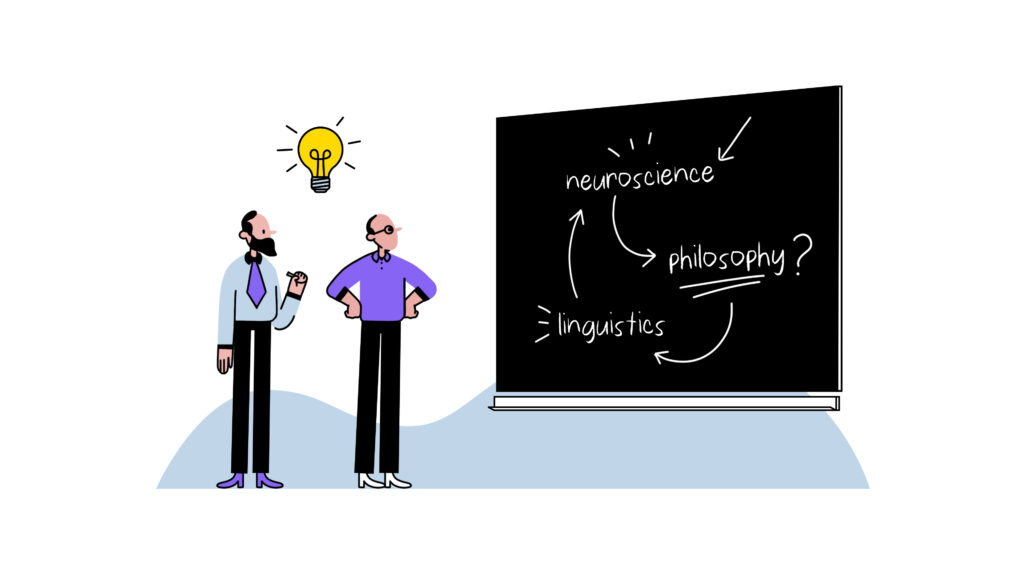AI is everywhere – but where did it come from? (Part 1)
There is nearly no chance that you did not notice the recent raise of AI. For many people, it might seem like AI popped out of nowhere and conquered nearly all aspects of life in the last few years. But what if I told you that the term AI was already coined in the 50s. That Alan Turing suggested ways on how to teach a machine to think as far back as 1947. And that the concept of the first artificial neuron was proposed in 1943?
Let me take you on a short journey, beginning in the first half of the last century to show you, how rich the history of AI is. Once we return to the current time, you will have seen that the current AI hype is just one in a long line of AI hypes that, up until now, have always lead to big disappointments
But let’s start at the beginning, or rather – even before it.
We start in 1943, when Warren McCulloch and Walter Pitts combined knowledge from neuroscience and theories from Turing on computing to propose an artificial neuron, which is now widely considered to be the first advancement of AI. However, by then, AI as a discipline was not yet born. Instead, it existed somewhere between the multiple disciplines that form the roots of AI: philosophy, mathematics, neuroscience, psychology and computer engineering and linguistics.
This is not the blog post to get into detail about what an artificial neuron is or how it works. For now, you can think of it as a building block to a network of several artificial neurons, an artificial neural network. McCulloch and Pitts were able to show that their model of artificial neurons was able to do calculations and also would technically be able to learn. However, they did not yet know how. Another important milestone before we come to the birth of AI as a discipline is the seminal paper of Alan Turing in 1947: “Computing Machine and Intelligence”. In it, he proposed an idea that can be seen as the foundation of machine learning, as we know it now: Rather than trying to simulate the mind of an adult, we should create that of a child with the ability to learn and be taught. Pretty impressive thoughts for that time.
Fast forward to 1956, where AI as a discipline was finally born. A number of leading scientists of the root disciplines of AI gathered for the Dartmouth workshop, where the term Artificial Intelligence was coined by John McCarthy. This marked a pivotal moment, because from this moment on, the different disciplines would work closer together with a common goal, promising much quicker advancement. Participants were actually so optimistic about further developments that they believed they would be able to build a fully intelligent machine within the next 20 years. If you think you were an early adopter of the AI hype, think again 😉
In fact, a lot of progress and innovation was made in the first couple of years. Scientists were able to build a number of impressive things, e.g. checker and chess programs, programs that could solve algebra problems or speak English to a degree. First successes in machine translation were also made. They even built the first chatbot, Eliza. Eliza offered a “natural” dialogue between a human and the computer. From the outside, it worked much like Chatbots we know today. The user sends a message and Eliza responds. From a technical point of view, it was of course way less advanced. Even though the user might have the impression that Eliza understood their message, the program was a collection of smartly composed phrases and a dictionary to help it to personalize the question, which highlights the importance of how to humanize text. It was programmed to act as a psychologist and often responded with questions that would make the user tell more about what troubled them.
From today’s perspective these achievements may not seem particularly impressive. But all of this happened in a time where the average person has not yet seen a computer at all. At this time, it was absolutely astonishing that a machine showed skills that were, for a long time, believed to be exclusively human.
Today’s blog concludes on a suspenseful note, but fortunately, you can find the rest in part two! There, we’ll delve into the era of the second AI winter, explore the fascinating world of ‘Expert System’ technology, and unravel the path that led us to our current advancements in artificial intelligence.


